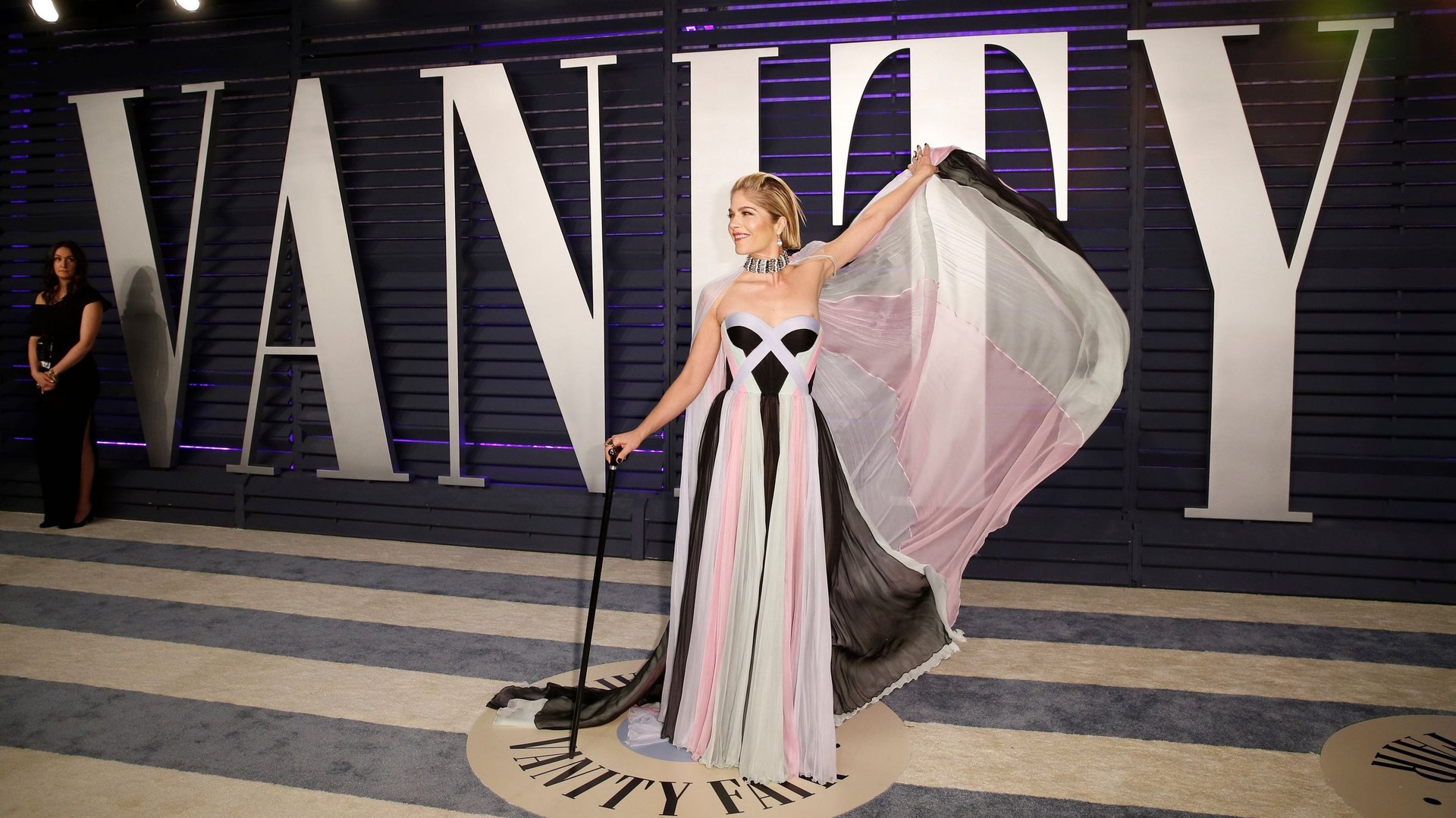The most memorable accessory of Oscars night was a cane
At the 91st Academy Awards last night (Feb. 24), Lady Gaga brought out something special to accessorize her black Alexander McQueen gown. Around her neck, the Oscar winner for best song wore the 141-year-old, 128.54-carat Tiffany Diamond, the stone Audrey Hepburn wore in the 1962 publicity photos for Breakfast at Tiffany’s and one of the largest yellow diamonds in the world.


At the 91st Academy Awards last night (Feb. 24), Lady Gaga brought out something special to accessorize her black Alexander McQueen gown. Around her neck, the Oscar winner for best song wore the 141-year-old, 128.54-carat Tiffany Diamond, the stone Audrey Hepburn wore in the 1962 publicity photos for Breakfast at Tiffany’s and one of the largest yellow diamonds in the world.
It was maybe the second-most notable accessory of the night, though. First place went to the cane used by actress Selma Blair as she attended Vanity Fair’s annual Oscar after-party.
Blair was making her first high-profile appearance since revealing her diagnosis with multiple sclerosis last year. The cane was a necessity. “I am disabled,” Blair told reporters. “I fall sometimes. I drop things.”
It was the exceptionally rare red-carpet reminder that people with disabilities exist everywhere, even in Hollywood. It also stood out, according to Sinéad Burke, an academic, writer, and advocate who has counseled top fashion brands on designing for people with disabilities, because while Hollywood routinely lauds able-bodied actors for their portrayals of disabled people, it seldom makes those with disabilities visible on its biggest night.
In 2017, IndieWire tallied 59 Oscar nominations over the years for actors playing a disabled character. Of them, 27 went on to win. The trend has continued. Last night, Olivia Colman won best actress for portraying an English queen in The Favourite who frequently requires a wheelchair or uses a crutch to walk. Rami Malek won best actor for playing singer Freddie Mercury, who died of pneumonia resulting from AIDS, a condition recognized as a disability in that it physically limits a person’s major life activities.
Yet actual disabled people are rarely seen at the Oscars, which is why Blair’s confident appearance and frank acknowledgement of her disability were noteworthy. It mattered, too, that the cane was decked out for the event like any Oscar accessory, wrapped in patent leather with a pink diamond embedded in the handle, to go with Blair’s Ralph & Russo gown. It was part of her outfit, not a conspicuously separate medical aid, and inherent to how she chose to represent herself at a moment when she knew all eyes would be on her.
As Burke puts it, it’s a sign that Blair “identifies very firmly as being disabled. The cane is not a prop to be utilized in a moment, but is part of her identity and part of her—and quite right that it exists in such a beautiful image and is not made invisible, in the way that society makes disability invisible.”
Other elements of the Oscars also reflect the ways society fails to consider disabled people. It was a nice moment, for instance, when Chris Evans, in a widely discussed moment online, helped Regina King up the stairs to the Oscar stage last night, but why are steps the only way onto the stage? Why not a ramp, and why is there no hand rail? Small things such as these are “invisible symbols of who we say gets to exist within these spaces,” says Burke.
There’s a lot of work to be done before that changes. But maybe Selma Blair, posing in her glamorous dress with her cane, can get a few more people to take notice.